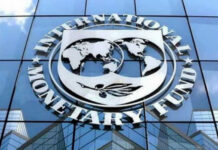As workers continue to die in unsafe factories, the industry keeps booming
AFTER the Rana Plaza clothing factory near Dhaka collapsed in April, killing at least 1,100 people, the big Western clothing companies that have their garments run up in Bangladesh came under pressure to intervene more forcefully to improve safety and working conditions in the workshops they buy from. Two groups of retailers and fashion brands, one mainly North American and one mainly European, have begun implementing new monitoring schemes. On October 24th Primark, a big British retailer, said it would extend for another three months the aid it is giving to families affected by the disaster, while it works on a long-term compensation scheme.
Meanwhile, the tragedies continue: earlier this month ten people died when another factory in the Bangladeshi capital, used by big foreign clothes retailers, went up in flames. Nevertheless, it has become clearer since Rana Plaza that the clothing firms have little option but to continue sending work to Bangladesh. It will remain Asia’s primary production base outside China for cheap clobber, with exports on track to rise by a fifth, to $24 billion, in the current fiscal year.
The country’s clothing industry has the advantage of scale: it has 5,000 factories, compared with 2,500 in Indonesia and 2,000 in Vietnam. Its labour costs less than any of its Asian rivals’: even a near tripling in the minimum wage, to $100 a month, as garment workers are demanding from the government, would not change this. And unlike clothes put together in China, India and Sri Lanka, those stitched in Bangladesh enjoy duty-free access to the European Union.
Such is the growth in demand for cheap wear that Bangladesh’s clothing industry is forecast to quadruple in size over the next 20 years. It already employs 4m, mostly women, in a country with 31m households. Unless productivity rises sharply, millions more women will be drawn from their homes into the workplace, a drastic change in a conservative society.
Although output is booming, profitability has slumped. In the past five years the price of the average garment has fallen by 12% in local-currency terms. In that period the factory owners’ return on investment has plunged from an average of 50% to 20%, estimates Forrest Cookson, an American economist and expert on the Bangladeshi economy. That still sounds good but capital is costly. To get money from domestic banks, palms have to be greased, so textile firms in effect borrow at around 18%.
So, despite the prospect of years of further growth to come, some local factory owners are talking of selling up. A recent surge in Bangladeshis buying homes abroad is perhaps a sign that some of the families that control the clothing business are preparing an exit. Others are getting money out by underinvoicing foreign sales and keeping the difference abroad.
If the government forces the factory owners to increase pay (an election is coming, so it may well do so), they will be even less willing and able to invest in making their premises less hazardous. The most promising way to make the country’s clothing industry both safer and more profitable is to boost productivity and output at the larger and generally better-run factories, and drive the smaller, dodgier ones out of business.
This, broadly, is the objective of Tau Investment Management, a New York–based firm which seeks “capitalist solutions to capitalism’s failures”. It wants to inject up to $50m in each of a number of big factories, to sort out their safety, environmental, labour and efficiency problems. It hopes foreign clothes firms will flock to these high-quality suppliers, leaving the rest to wither away. A commendable idea, but a risky and expensive one.
Source: The Economist










